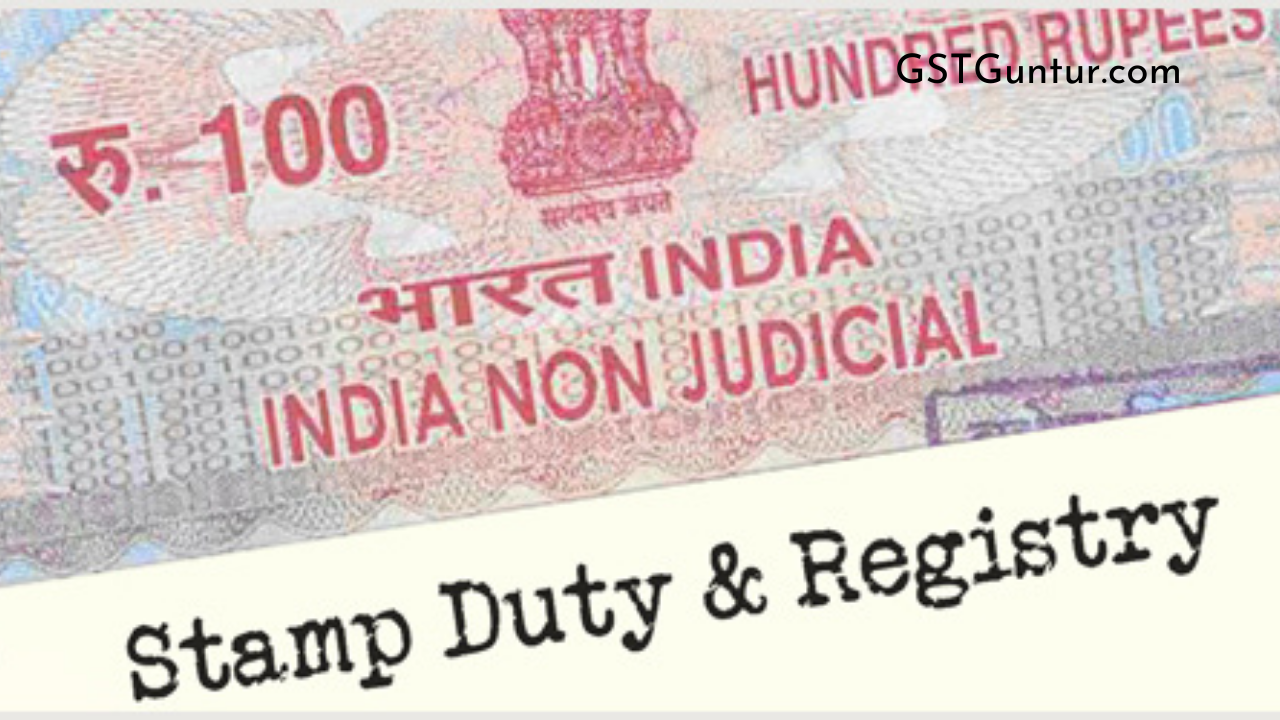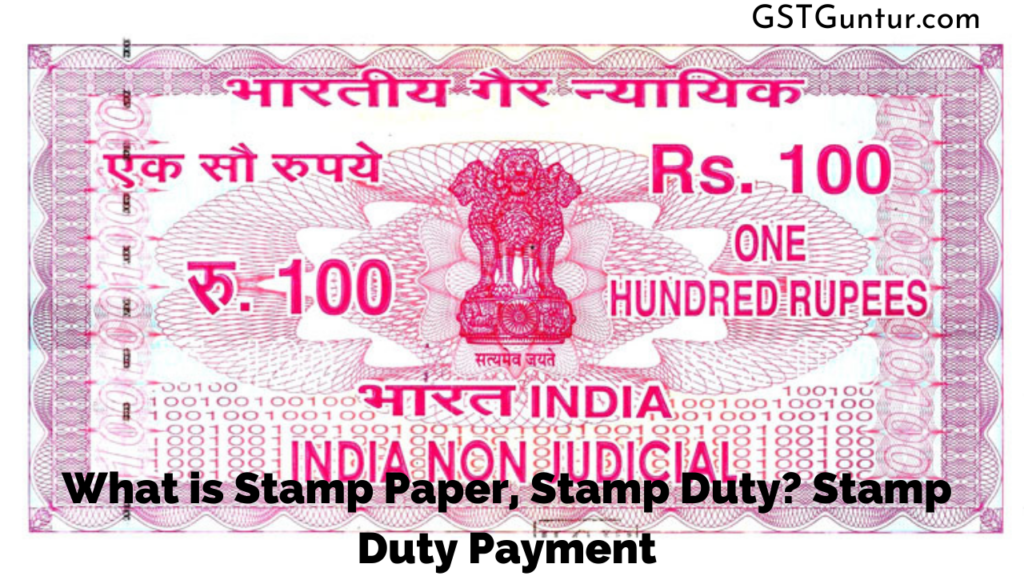What is a Stamp Paper and Stamp Duty?: Stamp duty is a form of the taxation system, which acts as legal documentation for any sale or purchase of an asset. It is levied under the state government.
Therefore, stamp duty is a government indirect tax, which is levied on all authorised and legal property transactions.
Stamp duty rates are dependent on the state in which the property dealings are being performed. Stamp duty may be paid online, offline, or both ways as deemed suitable by homebuyers.
Stamp papers, which have to be bought in the seller or buyer’s name, are valid for six months, provided the stamp duty is paid.
- How to Pay The Stamp Duty?
- Stamp Duty Charges Ways
- Stamp Duty Act
- Stamp Duty as Related to Property Registration
- Stamp Duty as Related to Property Registration
- Factors Influencing the Level of Stamp Duty Levied
- Stamp Duty Calculation
- Documents Required for Stamp Duty
- Registration Fee
How to Pay The Stamp Duty?
Through a Physical Stamp Paper
This is the most straightforward way to settle the stamp duty. It is possible to purchase stamp paper from any registered seller. The details of all the property transactions are mentioned in this paper. However, if the stamp duty rates applied are very high, it becomes a costly way to avail since the concerned person will have to buy many such papers.
Franking
The concerned needs to visit an authorized franking agent who will stamp the transaction documents indicating that the paper has been duly stamped.
The eligibility criteria to be able to opt for this method are that the question should reach a certain minimum threshold.
Apart from this, there are charges levied by the franking agent as well. This fee is deducted from the overall amount of the stamp duty paper.
Most banks provide this service of franking agents to their clients.
Online Mode
To avail of the services in the online mode, the client must follow the given below steps:
- At first, the client needs to visit the official e-Stamping website.
- In the case of first-time users, the client will have to select the option “Register Now”. This protocol for enrolling in the User Registration is required and completely free of charge.
- In the next step, the client will have to provide a valid e-mail ID and a valid Mobile Number for enrolling on the site.
- The client will have to enter the required credentials to create the User ID and the respective Password.
- After successful registration on the site, an activation link is sent to the e-mail ID provided in the previous steps. The client will then have to click on the activation link to finish the registration procedure.
- Then they have to choose the “STATE” option from the State drop-down list. After that, the client must choose the “Nearest SHCIL Branch” option.
- The client will then have to enter the necessary credential, including the First Party Name, Second Party Name, Article No, Stamp Duty Paid By and Stamp Duty Amount, to name a few. These details help to generate the Online Reference Acknowledgement Number.
- The hard copy of the Online Reference Acknowledgement Number needs to be taken for future reference.
- The client needs to go to the nearest StockHolding Branch to take the final print out of the e-Stamp Certificate as the hardcopy.

Stamp Duty Charges Ways
Any citizen can adjust the stamp duty charges through the following ways-
- Cheque
- Cash
- Pay Order
- Demand Draft
- Pay Order
- RTGS
- NEFT
- Account to Account transfer
- It always a better option to get in touch with the nearest e-Stamping centre before beginning any Electronic fund transfer. The recipient must have proof of the real bank/payment gateway fees.
Stamp Duty Act
Stamp duty is paid according to the guidelines as mentioned under Section 3 of the Indian Stamp Act, 1899.
Stamp duty is issued mainly to raise funds for local governments apart from rendering a document legal.
Stamp Duty as Related to Property Registration
Legal proof of possession or transference of a property is essentially needed. Under maximum circumstances, the person in question who is buying the property and dealing with the transactions needs to register their name in the local body records like the municipality.
At the time of registration, the customer must pay stamp duty.
The rate of the stamp duty levied on any property is dependent on the state in which the Property is located, i.e., the sum of stamp duty varies from state to state.
Stamp duty likewise depends on the age of the property, i.e., whether a given property is new or old.
Factors Influencing the Level of Stamp Duty Levied
Certain considerations play a significant role in determining the stamp duty imposed on a specific property-
- Age of the Property: Since stamp duty is measured based on the complete market worth of the Property, older buildings typically face lower stamp duty charges while newer buildings pull in high demand. This is because of the fact that the market value of old houses has decreased over time.
- Age of the Owner: Similar to the age of the Property, the age of the property owner is also a deciding factor.
- City or location of the Property: In the event that your property is situated in a municipal locality or an affluent urban district, you should always be prepared to pay heavy stamp duty. If your property is located within the Panchayat limits or on the outskirts of town, you can spend a lot lesser as compared to the previous case to get it stamped. Also, the rate differs from state to state.
- Property owner’s gender and age: Similar to senior citizens, women in our nation likewise get a rebate on stamp duty charges if the Property is enrolled in her name. Furthermore, men cost about 2% more to get their land registry papers stamped when contrasted with women.
- Usage of Property: Commercial buildings attract a high stamp duty fee when compared to residential buildings. This is mainly because commercial buildings would need a lot of amenities, floor space, and security features.
Stamp Duty Calculation
The concerned authorities use a variety of metrics to quantify costs, including the sort of building or plot in question.
For instance, in some jurisdictions, the constructed area is used to calculate stamp duty and registration charges for individual buildings. At the same time, the developed region if there should be an occurrence of apartments.
The stamp duty charges can also be amended by states annually in accordance with the state budget.
In certain provinces, women are given the chance of exemption from all stamp duty and registration fees.
Here are specific considerations to bear in mind when it comes to the imposition of stamp duty at the time of land listing.
- The estimate is primarily based on the property’s “Guidance Value,” the base worth at which the property ought to be enrolled. The value is defined by the state government’s concerned competent authority.
- The charges are in a roundabout way corresponding to the market worth of the property and different angles, and other factors such as market efficiency.
- Different imposes, such as state and central, are likewise relevantly levied on registration and stamp duty payments.
Documents Required for Stamp Duty
Below mentioned are the documents and the certificates that are essential when it comes to the registration of the stamp duty paper
- Transfer instruments
- Deed of partition
- Reconveyance of mortgaged Property
- Mortgage deed
- Certificates of sale
- Gift deed
- Exchange deed
- Tenancy agreement
- Power of attorneys
- License agreement
- Lease deeds
After Paying Stamp Duty, Documents Must Be Registered
After paying the stamp duty, the certificate must be registered with a sub-registrar under the Indian Registration Act. If the sale includes the buying of real estate, the registrar ought to be from the domain in which the land is placed.
The primary goal of registration is to enlist the implementation of the document. Only by registering the paperwork, it becomes legitimate and the ownership, if any, is passed to the rightful proprietor.
Registration Fee
The registration fee is a charge that is levied in addition to the stamp duty. This rate changes from one state to another.
In Karnataka, for example, the registration fee is set at 1% of the transaction amount.
